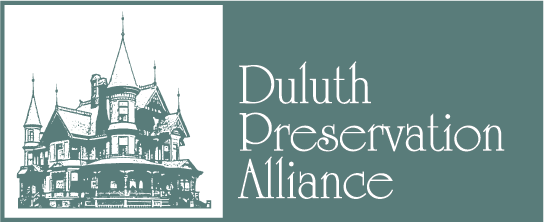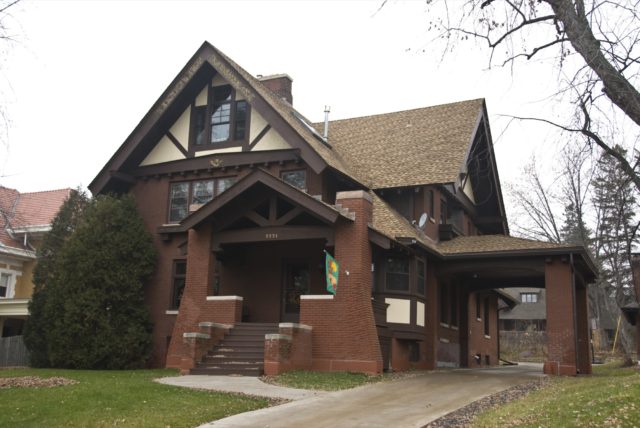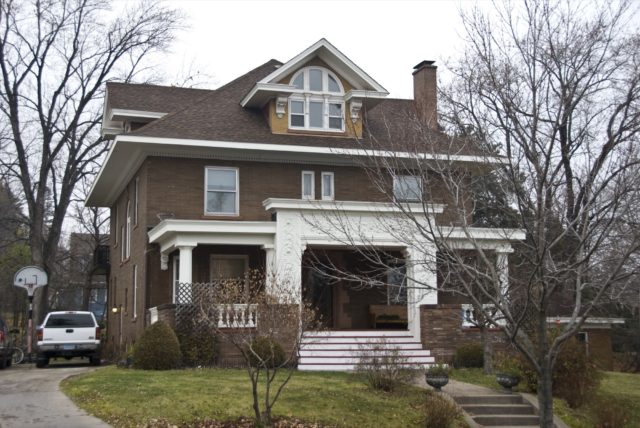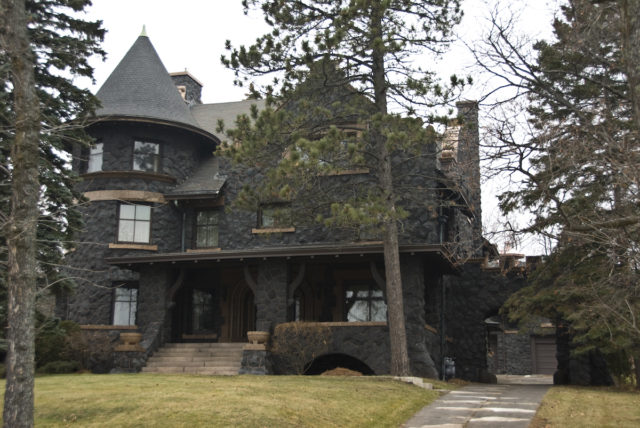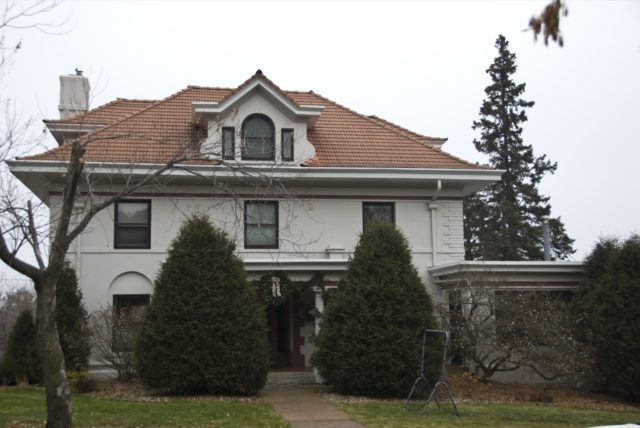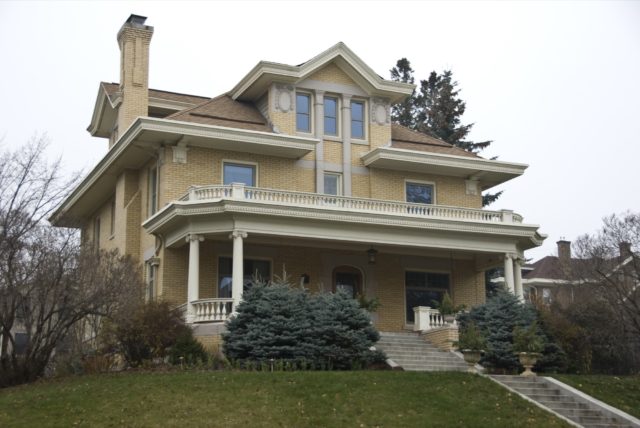Julia Duncan’s house is a fine example of the “Picturesque” approach to Tudor revival style, featuring a variety of high-quality materials (brick, stone, stucco, timbers, and wood shingles) and excellent craftsmanship. She built the house after the death of her husband David, who with their son Charles was a partner […]
Read MoreArchitect: Carl Nystrom
124 N. 23rd Ave. E.
Another Bray and Nystrom cubic Four Square design with Classical Revival style elements in the tradition of I. Vernon Hill, the Moore House features four gabled dormers facing in each direction. From 1887 to 1938 Moore rose through the ranks of the American Exchange Bank, starting as a messenger and […]
Read More2505 E. 1st St.
The Myers’ two-story Richardsonian Romanesque Style house is made more dramatic by its facing of black basalt, the very rock blasted out of the earth to grade nearby 25th Avenue East. Myers, a major player in the Duluth real estate game, may have gotten the idea to use the stone […]
Read More2230 E. 2nd St.
Bray and Nystrom gave this American Four Square home a Mediterranean feel by including Classical Revival details and stucco cladding. One of many grain brokers who called Duluth’s East End their home, George Spencer served as president of the Consolidated Elevator Company. In June of 1908 one of the company’s […]
Read More2201 E. 1st St.
Although designed by Bray and Nystrom, the McDougall home is heavily influenced by I. Vernon Hill’s Ornamented Cube idea employed on the Crosby house: a yellow brick box with a flared dormer gable. Captain Alexander McDougall, who built the house as a widower, invented the whaleback steamer (nicknamed “pig boat” […]
Read More